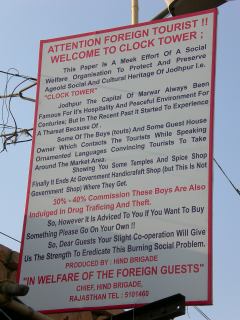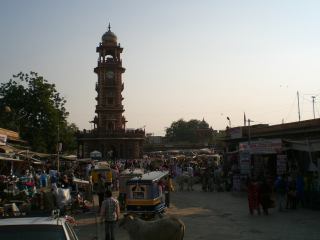Q: Currently, I am practicing purdah but while I am in India, I wish to travel about the city by car. How do I travel while still keeping myself hidden from public view?
A: That’s easy; use a car converted for purdah, like the 1938 Cadillac Saloon that the Maharana of Udaipur arranged for the Maharani. All the rear windows are covered by fine curtains so she could travel yet remain unseen.
Q: I am interested in getting rid of as much of my money as I can in a short period of time; what is the quickest and most efficient way to relieve myself of my funds?
A: First of all, be as visibly foreign as possible. If you are wearing clothing inappropriate for the weather or which might be considered a mild affront to local custom, so much the better. Arrive in a busy city late at night or extremely early in the morning and make certain that you do not have any small denomination bills. If you know the name your hotel, ensure that the address is not accessible. Accept the first offer of an auto-rickshaw from the many men that approach you and get into the vehicle without agreeing on a price. When you arrive at a destination (note: the destination may or may not be your hotel), pay the driver the first price he requests. As an added bonus, you will be required to pay twice as much for your hotel room for the duration of your stay than if you had arrived without the auto-rickshaw driver whose commission you must support.
Q: Where can I get my teeth extracted?
A: Visit any local “dentist” who has set up operation on the side of a busy, dusty street. Most often, these men can be found near an especially busy intersection. Take care to sit with your back to traffic and just ignore any bumps or brushes you may feel from passing motorists.
Q: How do I listen to Hindi music?
A: Loud or not at all. It does not sound as good at low volume so turn it up until it is painful to the eardrum and then back it off a smidge. Do this regardless of the time of day or night and/or the tastes or activities of those around you.
Q: While I am in India, I plan to mount an attack on a neighbouring region; how do I prevent the elephants of the opposing army from attacking my horses?
A: Follow the example of the medieval Maharajas: the best method they had for resolving this problem was to outfit their horses with armour that extended beyond the nose to resemble a trunk. The elephants will be tricked into thinking that a horse thusly attired is a baby elephant and they won’t attack it.
Q: Are the pigs that live in the streets unfriendly?
A: Only if you kick the garbage they are eating, even if it was just an accident.
Q: I am interested in damning my soul and cursing my family; how can I arrange this while in India?
A: First of all, participate in a ritual blessing of your soul and those of your family by a man who may be a priest on the shores of the lake in Pushkar. When he has completed the blessing (which, incidentally, you may not have requested but been kind of roped into) and asks for money for his supplies/services, respond with skepticism and offer a small sum. After you pay this sum and are summarily dismissed, hide outside the entrance to the temple and surreptitiously clean the bindi from your forehead. This should do the trick.
Q: How is cricket played?
A: No idea, but you best learn before arriving in India or risk looking an ignoramus.
Q: What do I do when a cow is head-butting me?
A: If, while walking a street in a city or village in India, you encounter a cow or bull that, for whatever reason, insists on head-butting you, just give it whatever food you are eating. Then, side-step the headbutting/potential goring by scurrying gracelessly around the side of the cow while perhaps uttering a little shriek of worry. This will also provide some amusement for the Indians in the near vicinity.
Q: While in India, I have taken a job digging up roadbeds for maintenance; how do I go about my task?
A: First, erect a home-made sign on the road to warn oncoming traffic of the road maintenance ahead; this sign need not be especially eye-catching or visible. Position yourself on the road in the area which must be excavated, standing with feet shoulder-width apart. Raise a sledgehammer above your head and smash it down on the flat road surface. Repeat as necessary until the asphault breaks open. Next, use a pick-ax to pry apart the asphault and then use a small shovel to dig out the earth underneath. Some helpful, sari-wearing colleagues will be on hand to haul away the earth using metal bowls perched atop their heads.
Q: In India, what do cows eat?
A: The cows that live on the streets of India are free to eat whatever they please. Their favourite food is vegetable matter but they are not picky and will eat cardboard boxes or plastic bags just the same.

Q: While in India, can I drive my camels, oxen, elephants or herd of goats through busy traffic in any city?
A: Why not?

Q: What do I do if I need to throw up while aboard an intercity bus in transit?
A: Open the window. Throw up out said window.
If you are assigned to one of the upper berths on a semi-sleeper bus (the kind that have a row of bunks installed above the heads of the people sitting below), nevermind that the sick may re-enter the bus through one of the windows of the unfortunate people sitting below. To your amusement, one of those unfortunate people may be a foreigner who will not have the means or opportunity to clean herself up until she reaches her destination after a period of 6 hours.
Q: As a tourist in India, are there any instructions to follow while shopping at a city’s local bazaar?
A: Yes. See below.


Q: While driving in India, when is it appropriate to use the horn?
A: Use the horn only in the following circumstances:
1. when you are behind another vehicle that is moving or is stopped at an intersection or a traffic jam;
2. when you turn, or are about to turn a corner;
3. while doing something illegal such as, driving on the wrong side of the street into oncoming traffic. Note: the horn should remain honking for the duration of the illegal manouever.
4. when you spy a friend, colleague or nemesis on the roadside and wish to attract his/her attention;
5. when the car is moving forwards or backwards.
After five weeks in India, we visited the small city of Pushkar. It is known, predominantly, as the home of the yearly Camel Festival during which thousands of people and camels (and tourists) descend on this little place to witness the spectacle of the camel trade on a massive scale. The rest of the year, it is “merely” a significant pilgrimage site for Hindus to visit one of only a handful of temples dedicated to Brahma, the highest god of Hinduism, the one and the everything. So, we decided to take a look.
